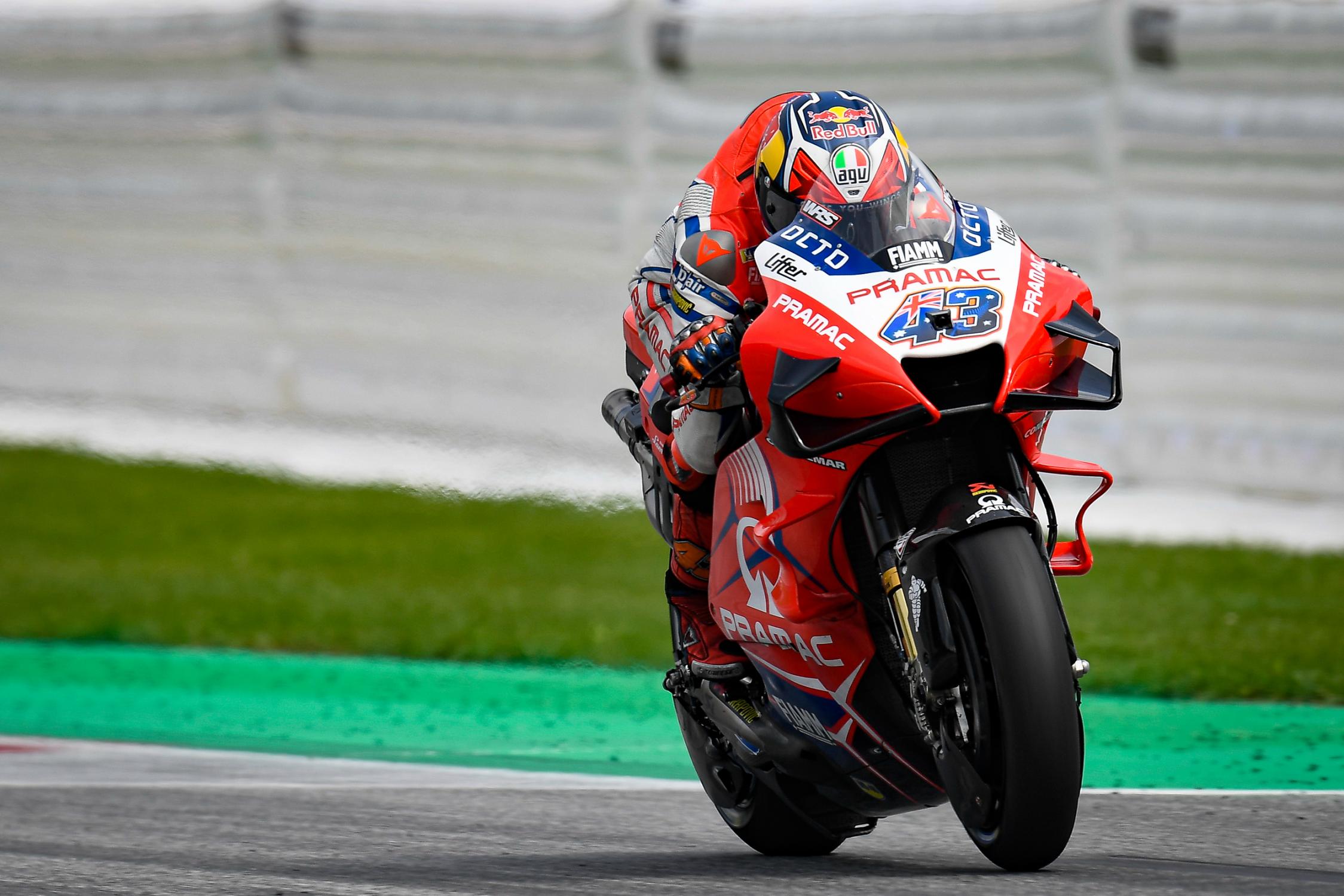A variable geometry chassis is one of the biggest dreams that MotoGP engineers have sought to realize for decades. Geometry – like just about everything else on a motorcycle – is a matter of compromise, because it's impossible to design a motorcycle that performs perfectly in all three phases: braking, cornering and accelerating. After having previously detailed its operation, we were able to observe it on video.
This device is an evolution of their Holeshot device which allows them to use it when the motorcycle is moving. It works by activating a small lever which allows the rear of the motorcycle to lower.
During FP2, we were able to observe one of the Ducati mechanics testing this mechanism by warming up the bike. He pressed on the motorcycle saddle to compress the shock absorber, and as expected, the motorcycle barely moved.
The mechanic then pulled the lever to activate the Holeshot device, but nothing visually changed at that point. It was only when the mechanic pressed down on the saddle again to try to compress the shock that the rear end of the bike "dropped" dramatically.
In the following videos you can watch Jack Miller and Andrea Dovizioso use the chassis height adjuster at Turn 1 at Spielberg. However, in the second video, Dovi shows how the positive effects of adjusting the chassis height have the ability to turn into negative effects.
You have to carefully observe the rear of Jack Miller's GP20. Just before it goes over the curb you can see the rear end suddenly lower. This sudden reaction of the motorcycle is not natural when accelerating. Motorcycles lower when accelerating (in general) but not by this amount.
The rear lowers considerably here. Ducati does this to help riders accelerate harder than before. In effect, this changes the ergonomics of the bike, putting less pressure on the rear tire, which allows them to accelerate harder.
In this video we can clearly see that once the chassis height adjustment is activated, the rear end of the bike remains compressed and does not rise up. In the next video it looks like Andrea Dovizioso is having a bit more trouble, with the rear end bouncing around once the system has been activated.
We've seen Dovizioso use the chassis height adjustment regularly, but he certainly doesn't use it as often as Jack Miller.
When the rear end of the bike drops so quickly, it has the potential to destabilize the bike, which is why we only see Ducati riders using it in slower corners that have a fairly straight exit.
When the rear of Dovizioso's bike drops here, he gets back on the bike, puts it upright and it does a little wheelie. The wheelie itself is easily manageable with the rear brake and wouldn't compromise Dovi's exit on the straight at all, but it's still a slight problem created by the change in center of gravity that Dovizioso could do without.
Ducati's chassis height adjustment is a remarkable piece of engineering, but it's a tool that Ducati must use wisely. In the wrong situation, its positive effects can easily turn into negative effects.




